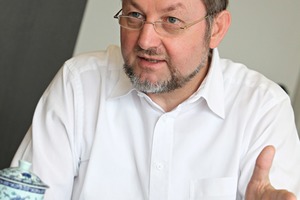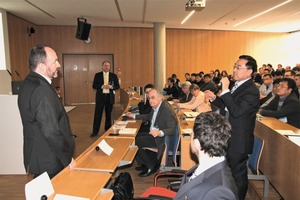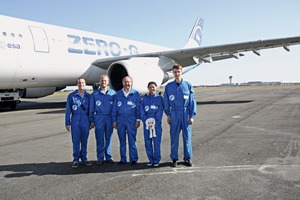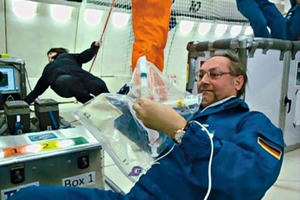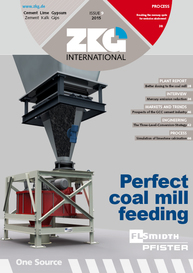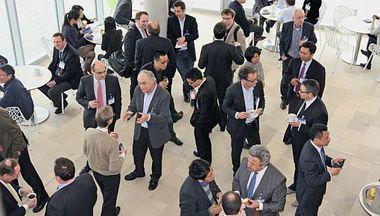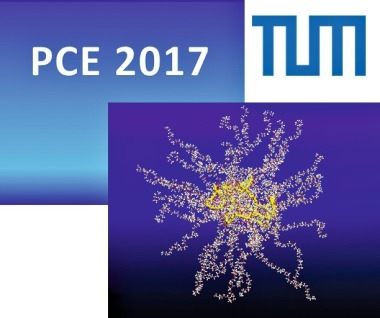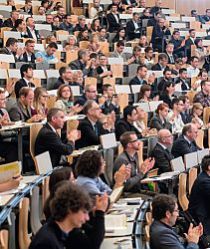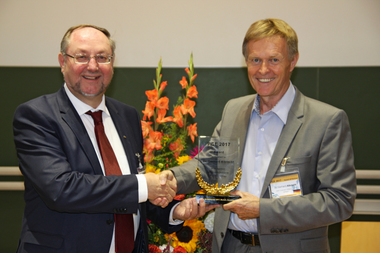Construction Chemistry at TU München
In 2014, Technische Universität München (TUM) opened its new “Center for Advanced PCE Studies” which belongs to the Chair for Construction Chemistry at the Faculty of Chemistry in Garching near Munich/Germany. Recently, ZKG had the opportunity to interview Prof. Dr. Johann Plank and discuss the activities of his Chair.
Plank: Excellent and tough. Excellent, because it finally allowed me to do fundamental research which is necessary to understand concrete admixtures which we are using so extensively now, and to work with young people which is very rewarding. And tough, because I literally started at point zero. I inherited empty labs and had to prepare all lectures and seminars myself. As the field of construction chemicals was so new, there was nothing I could build on.
Plank: Master students from chemistry and chemical engineering can elect a specialization module “Construction Chemicals & Materials” which includes lectures on binder and admixture chemistry, nanomaterials and colloid chemistry. These courses are taught by myself and external lecturers. In addition, I teach “Inorganic and General Principles of Chemistry” for the Bachelor course of environmental engineers and geoscientists. And I offer a special course “The chemical industry” which is supposed to prepare senior Ph.D. students for their professional life later on. There we discuss R & D management, leadership, how to market chemical products and – very important! – business economics.
Plank: Altogether there were about 70 Ph.D. students, not only from Germany, but from countries from all over the world including Togo, Nigeria, Syria, Egypt, Columbia, Thailand and – of course – China, the country with the largest building activity in the world. My former students mostly work for chemical companies, the cement, drymix mortar and oil industry and sometimes for patent offices and consulting companies. I am especially happy that a few decided on an academic career.
Plank: We are the only university in Europe which runs a fully equipped laboratory on oil well cementing, and recently we branched out into fluids for fracking and drilling. This special expertise makes my students highly sought after, and they can find employment in well-known oil service companies.
Plank: Absolutely! We perform fundamental research on the chemistry of Portland cement and other binders, especially now on geopolymers and calcined clays. However, our speciality here in Munich is the chemistry of admixtures. We can synthesize all polymers including superplasticizers, retarders, VMAs, water retention agents etc. ourselves and then investigate their working mechanism as well as the interactions between each other– a phenomenon which is often overlooked.
Plank: Yes, our interests also include latex polymers and generally new materials such as e.g. nanoparticles and hierarchically structured materials.
Plank: Correct, we were the first to synthesize a CaCO3 aerogel which exhibits better cement compatibility and stability than the well-known SiO2 aerogels.
Plank: Oh, this was a spectacular experience! Four Ph.D. students and myself performed 150 experiments at zero gravity on parabolic flights sponsored by DLR. We found that under microgravity, ettringite crystals are much smaller, more abundant, and defect-free and more round. All those effects are due to the absence of convection, at zero g crystal growth relies on ion diffusion to the surface only. As ettringite presents the main anchoring site for admixtures, it is very important to understand its crystallization process.
Plank: Yes, this presentation is about the cement compatibility of PCEs. We found that common PCE polymers act as morphological catalysts for ettringite, i.e. they reduce its crystal size considerably from the μm to the nm scale, as a result of surface adsorption. The consequence of this effect is a huge surface area of ettringite which needs to be covered by PCEs and thus requires exceptionally high dosages, therefore applicators think there is an “incompatibility” problem between such cements and PCEs. We could show that certain PCE structures do not exhibit this negative effect on ettringite crystallization, and thus are fully “compatible” with all cements.
Plank: Correct. Currently, we have the following projects under investigation: Clay tolerance of PCE superplasticizers; identification of the microstructure of PCE polymers using 13 C NMR spectroscopy and signal deconvolution; compatibility of PCEs with polycondensate-based superplasticizers; PCEs as grinding agents; PCEs as templating agents for CaCO3; phosphated PCEs; and a few more.
Plank: Relative to admixtures, a big gap exists in the field of shrinkage reducing admixtures (SRAs). The products we have today require exceptionally high dosages of 2 to 5 % and are still not as effective as we would need. We definitely have to improve on this.
Plank: Admixture packages which allow the safe application of self-compacting concrete (SCC) on job sites. This would eliminate the need to compact concrete on the construction site where many things can go wrong. Currently, SCC is exclusively used in precast concrete plants. Furthermore, if we could measure the rheology of concrete via the energy consumed by the rotating container on the concrete truck and adjust it automatically upon arrival at the job site, it would eliminate a lot of labor and make concrete more safe with respect to its quality.
Plank: The cement industry will undoubtedly experience major changes in the next 20 to 30 years by producing completely new binders with significantly less CO2 emission. As it stands now, calcined clays will constitute a major component in those future cements. Admixture technology has to follow this trend and needs to provide completely new products, because of the different surface chemistry of e.g. calcined clays compared to Portland cement.
Plank: I hope that in the future we will able to substantially improve the ductility of concrete. Concrete has many advantages, but its major limitation is its brittleness. Its tensile or bending strength is only about 10 % of its compressive strength, and this relation decreases even more in high-strength concrete where it often drops to below 5 %. Also, compared to a human bone, the fracture toughness of concrete is about 100 times less. This explains why concrete develops fatigue as a result of wind forces on skyscrapers, or bridges show cracks resulting from the vibrations of traffic.
Plank: The only promising way is to modify the microstructure of concrete. We have perfect examples in nature, just look at mollusks. Their shells are made of aragonite platelets with layers of chitin in between, a typical bio-nanocomposite. Or consider the human bone. I believe that learning from nature can lead us to entirely new microstructures which prohibit fracture propagation. We have prepared CaCO3-PCE nanocomposites with exactly such properties. It would clearly revolutionize the concrete industry, if somebody can accomplish a similar microstructure with C-S-H. I am optimistic that we will get there within the next 20 years.
Plank: Certainly improved thermal insulating systems to save energy. This is not because of increasing energy prices. From our work in oil well cementing and fracking I am aware that we have more oil reserves than ever before, and thanks to fracking oil is more abundant now. Therefore, I expect oil and gas prices to remain low in the foreseeable future. However, 40 % of our primary energy consumption goes into the heating or cooling of buildings. This share is by far higher than what the industry in total emits in CO2. We owe it to the environment to reduce this emission. Those insulating systems could also become a export hit for our industry.

